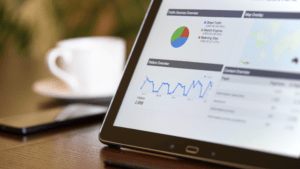With the seemingly endless proliferation of websites, social media and online resources, it’s quickly becoming harder and harder to stand out from the crowd no matter your particular niche. Indeed, to differentiate and draw attention to your website, product line or service amongst the great virtual masses it’s now necessary to go to great lengths to grab a visitor’s or reader’s attention quickly and efficiently.

In the world of email marketing—a world that, in the past few years, some tech analysts had predicted was on its way out a means of online communication—getting a recipient to click on a message or follow a link is certainly a tall task: how many of us simply read a subject line and immediately send the message to the trash heap? How many of us opt-out of certain email marketing campaigns because they clog up our inboxes? The questions go on and on.
However, there’s hope for those who still rely on email marketing to foster and attract business, whether from new users or tried-and-true customers. Here are some great tips to check out and try the next time you embark on an email-based marketing effort.
- Leverage the power of transactional emails. These are emails set up on an automated basis after a visitor to your website takes a specific action, such as filling out a contact/information form, purchasing a specific product or engaging a service. Transactional emails are also great for user’s wanting to track their product to their front door: by sending updates you keep messages flowing to their inbox, which cements your brand in the user’s mind.
- Put in the time to create amazing subject lines and preview text. Nothing is more of a turn-off to an email recipient than to see a flat, uninspired message appear in their inbox, and too often the email doesn’t even get opened but rather is relegated to the delete folder. So marketing gurus suggest having short and engaging text, and recommend having the subject line take the form of a question and the preview text a quick synopsis of the answer. Then, if you follow up on the preview text with equally engaging main-body text, it’s likely you’ll see a dramatic rise in your click-through rates.
- If the purpose of an email campaign is to debut a new product or product line, have your messages give a brief description of the new offering with a compelling message that encourages them to explore further. And remember, be sure your email subject line and preview text relates directly to the specific product you’re pitching: having a user click on a link they believe is sending them a specific place only to end up at your home page can be extremely frustrating and annoying.
- Don’t be afraid to be fun and whimsical by using cartoons and emoticons. Because so much of what lands in our inboxes is boring and commonplace, being a bit frivolous can really help your emails stand out.
- Have a “call to action” and promote a sense of urgency. Whether you’re a non-profit organization promoting a year-end appeal for money or simply an e-tail business trying to boost sales, letting readers know they’re missing out on a great deal or that they can make a real difference in the world—if they act now—can encourage click-through rates and bring the attention you’re seeking.
- Get personal with your email marketing campaigns. Already many of the big social media sites employ this tactic with subject lines such as “recommended just for you” or some similar verbiage, but it works for e-commerce companies and bloggers as well. By personalizing the message, you show that you care about the user or subscriber, and as humans we all respond to that level of attention.
- Lastly, be sure any emails you send and links you include to web pages you want recipients to click on utilize responsive design. Remember that more and more people use mobile devices as their primary means of online communication and interaction, and if your messages show up garbled or hard to read—or if the link you include in the email body is difficult to click on—you risk the chance of losing a potential customer or subscriber.


